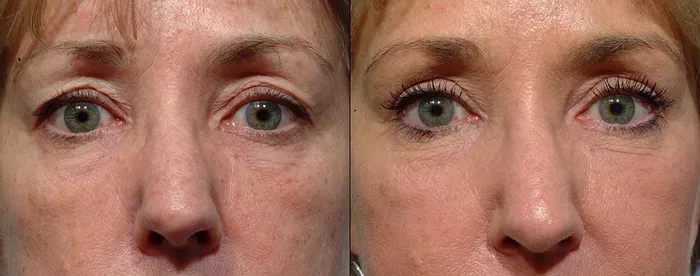Upper blepharoplasty, also known as an eyelid lift, is a cosmetic procedure that is designed to remove excess skin and fat from the upper eyelid. This procedure can help to improve vision, reduce the appearance of sagging or drooping eyelids, and create a more youthful and refreshed appearance. In this article, we will explore what to expect after upper blepharoplasty, including the recovery process, potential risks and complications, and tips for ensuring proper healing.
What is Upper Blepharoplasty?
Upper blepharoplasty is a cosmetic procedure that is designed to remove excess skin and fat from the upper eyelid. This procedure can help to improve vision, reduce the appearance of sagging or drooping eyelids, and create a more youthful and refreshed appearance.
The surgery involves making a small incision in the upper eyelid, removing excess skin and fat, and closing the incision with sutures. The procedure is typically performed on an outpatient basis under local anesthesia.
Recovery Process
The recovery process after upper blepharoplasty can vary depending on the individual and the extent of the procedure. In general, however, most patients can expect to experience some swelling and bruising around the eyes for the first week or so after the surgery.
It is important to keep the head elevated and to avoid rubbing or touching the eyes during the recovery period. Your surgeon may also recommend the use of cold compresses or eye drops to help reduce swelling and discomfort.
Most patients are able to return to work and other normal activities within a week or two after the surgery, although it may take several weeks for the full results of the procedure to become visible.
Potential Risks and Complications
Like all surgical procedures, upper blepharoplasty carries some risks and potential complications. These can include infection, bleeding, scarring, and changes in vision.
It is important to discuss any potential risks and complications with your surgeon before undergoing the procedure. Your surgeon can help you determine if upper blepharoplasty is the right option for you, and can provide you with information on how to minimize your risk of complications.
Tips for Proper Healing
To ensure proper healing after upper blepharoplasty, it is important to follow your surgeon’s post-operative instructions carefully. This may include:
Keeping the head elevated to reduce swelling
Avoiding strenuous activity for several weeks
Using cold compresses or eye drops to reduce swelling and discomfort
Taking any prescribed medications as directed
Avoiding rubbing or touching the eyes
Wearing sunglasses or other eye protection when outside
It is also important to maintain a healthy lifestyle, including proper skin care and sun protection, to ensure the longevity of the results.
Conclusion
In conclusion, upper blepharoplasty is a cosmetic procedure that is designed to remove excess skin and fat from the upper eyelid, creating a more youthful and refreshed appearance. While the recovery process can vary depending on the individual and the extent of the procedure, most patients can expect some swelling and bruising around the eyes for the first week or so after the surgery.
To ensure proper healing and minimize the risk of complications, it is important to follow your surgeon’s post-operative instructions carefully and to maintain a healthy lifestyle. With the right precautions and proper care, many patients are able to achieve a more youthful and refreshed appearance with upper blepharoplasty.


